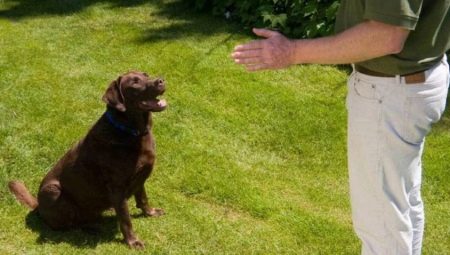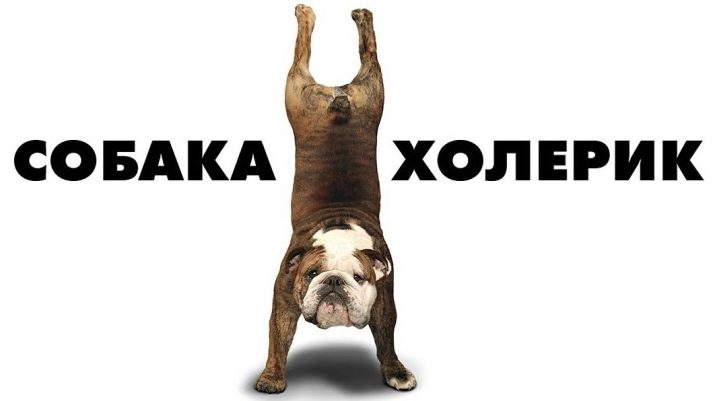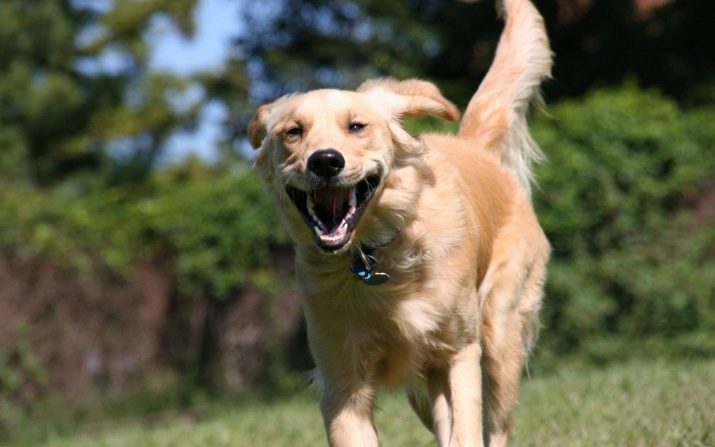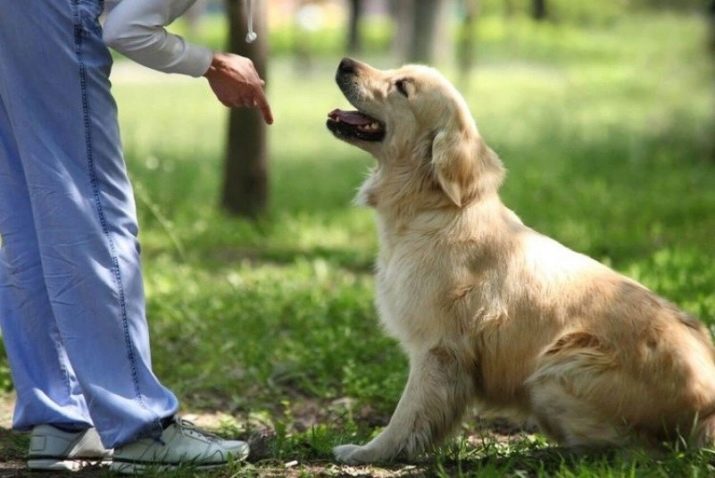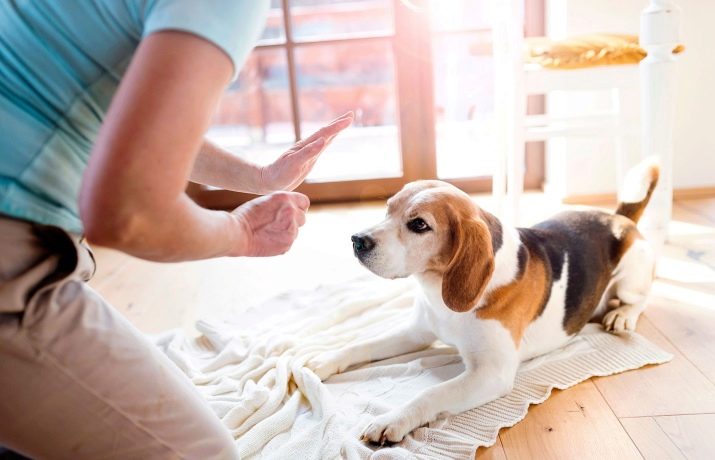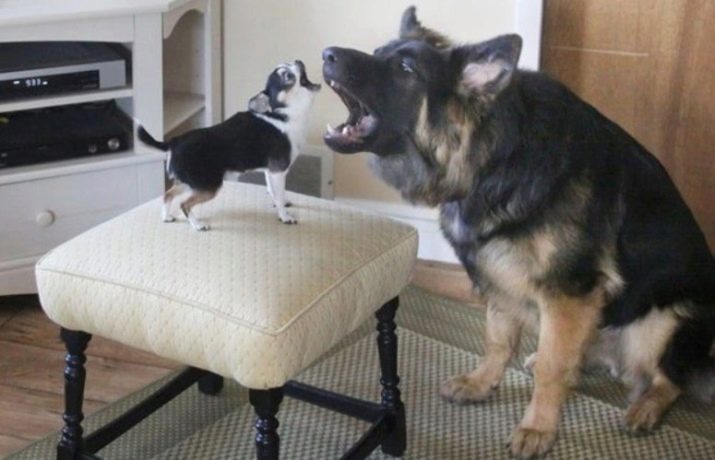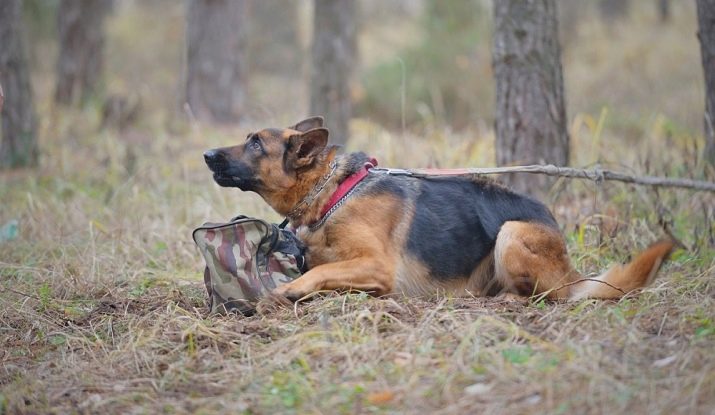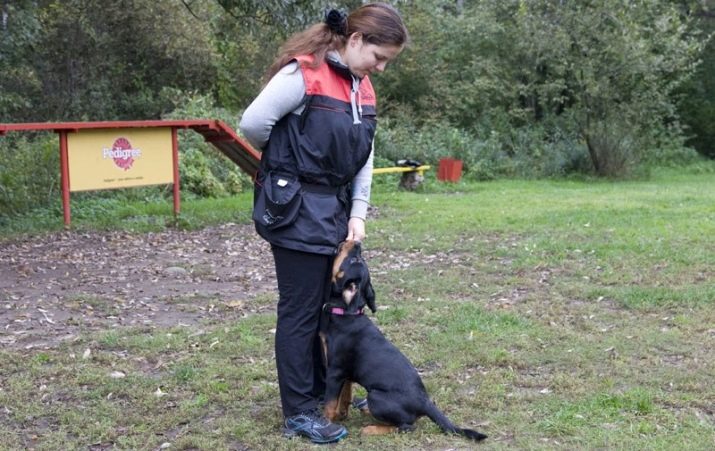“Voice” is the basic command for a dog, along with “place”, “sit”, “lie down” and “cannot”. Each puppy is able to learn how to bark on command, but for this the owner needs to make some effort.
It is better to adhere to special methods of training, otherwise the dog will get used to giving voice without a reason for the rewards.
Why train your pet to this team?
Barking is an expression of a dog's emotions. And barking on the team - is an indicator of the discipline of the animal. This skill is especially important for guard and hunting breeds in order to perform the following functions:
- in the event of danger, protect the host from enemies with the help of a timely signal (for example, barking at strangers in a private house);
- Notify the owner of a particular situation on the hunt.
Any dog can be trained in this team at home, even if it is not a watchdog. Thus, a positive image of the owner is emphasized, the discipline of the pet is formed, and an impressive effect is made on those around him. In any case, the owner will be pleased if his dog masters such a basic command thanks to proper training.
What you need to know before learning?
Before you form a puppy barking skill on the team, you need to decide on the type of his temperament. Dogs, like people, have their own character and are divided into the same psycho-types.
Choleric
Such a puppy is distinguished by activity, does not depart a step from the owner and is interested in everything in the world. He can even forget to eat, if he finds a hobby for everyone.
Sanguine
It is an energetic dog, but unlike the first psycho-type, it is able to take control of its energy and emotions. Pet with a similar temperament is easy enough to train.
Phlegmatic person
For this puppy a long and monotonous work will be a burden, so the owner should not expect him to repeat this or that team many times. Promotion in the form of delicacies will not be as necessary for the puppy as the joy on the face of the owner.
A dog with such a temperament is important to feel the performance of their work meaningful.
Melancholic
Such a puppy has a calm character. But with the help of food and praise the owner will not just teach this dog the command "voice". A pet of this psychotype must understand the importance and significance of this work. Only in this case, training will bear fruit. But the owner should stock up with considerable patience.
Dog choleric and sanguine dogs are quicker and more willing to be trained, because they themselves are more prone to barking. But with the wrong approach to training, there is a risk to accustom the dog choleric to a gratuitous barking. But a melancholic or phlegmatic psycho-type without a serious stimulus will be difficult to train this team.
The basic rules of training:
- first you need to determine the temperament of the dog and its ability to perceive and execute the command;
- it is necessary to start from a very early age, the older the pet, the more difficult it is to train;
- the owner needs to be persistent, the main thing in this business is patience and endurance;
- if the first attempts are unsuccessful, you should not immediately give up;
- from a variety of teaching methods, the voice command needs to choose one that is best for the pet, the method is determined by selection;
- so that the team is assimilated by the dog and is not forgotten by it, it is necessary to regularly engage in the repetition and honing of the skill - two or three times every week;
- It is better for the “voice” team to train the puppy after they have mastered other basics: “lie down”, “come to me”, “cannot”, etc .;
- it is possible to teach the dog both at home and on walks, the main thing is that the pet does not distract from the lessons;
- first, the training can last thirty minutes, then the owner must extend the time to sixty minutes;
- the team should be pronounced in a clear and loud tone, strictness in the voice is appropriate, but you should not get annoyed, only a good mood will help both the owner and the pet tune in to fruitful training.
What mistakes should be avoided?
With the wrong approach to training, a positive result in the dog may be completely absent or there is a risk of negative consequences. What not to do, teaching the puppy to perform the command "voice"?
- The most common mistake that many owners make is to repeat the command. If the dog does not bark after the first pronunciation of the word "voice", do not need to say the command many times. The main thing - to ensure that the pet listened to the owner the first time.
- Training a puppy is not a paramount matter for a walk. First you need to give your pet a run and play, otherwise he will not be able to immediately concentrate on the lesson. And when the puppy will throw out the main energy in running and games, the owner can proceed to the immediate training.
- It is important to understand that the dog may be tired, feel bad or not in the mood. Puppies are prone to whims, and the owner should in this case show loyalty and patience.
- One of the main rules of any training is that only one person needs to learn a pet. Of course, all members of the family can participate in the process, but the team must be given by one person, otherwise the dog will not be able to concentrate on execution.
- You should not be too strict. A puppy should not obey the owner because of the feeling of fear. The presence of irritation in the voice must be eradicated, otherwise such an unhealthy atmosphere will have a negative impact not only on the results of training, but also in general on the relationship between the owner and pet. And after the execution of the puppy team, it is important to praise or treat with a treat.
What teaching methods exist?
It is important to choose one of these methods and stick to it. Each dog is individual, so not all techniques will work the same way.
Teaching a puppy to bark on a team will help the following methods.
Promotion delicacy
Such a method would be appropriate for rocks that have a sanguine or choleric temperament. First, the owner calls the pet and gives the command to "sit." It is better that at this moment the dog was wearing a collar with a leash.
The owner needs to tighten the leash a little to limit the movement of the pet and so that he can not easily grab the treat. After that, you need to tease the puppy a little with a treat, until interest is seen.
Such a provocation should cause a barking dog. At this moment, the owner needs to say “voice” loudly, give the treat and pet the puppy.
Instead of food, you can use a toy. The main thing is that the thing aroused genuine interest in the pet.
This technique is also available in a modified version. It takes into account the fact of random barking dogs. As soon as the pet zagavkal, you need to immediately say the command "voice" and give the dog a treat. Thus, the animal will develop a strong link between the team and praise.
Emphasis on the dependence of the dog on the owner
This method can be used in two versions. In one of them, while walking, the owner must attach a leash to something on the street and move away for a certain distance. After a short time, the dog will whine and then bark. Then it is important to give the command "voice", go to the pet and stroke it.
The second option involves a little trick.Going for a walk, the owner needs to take a leash, and show your pet his intention to walk alone. Having opened the door, it is important to look at the animal and clearly say “voice”, usually the dogs react very strongly to the anticipation of the walk, and such provocation will surely provoke barking. As soon as this happens, it is important to praise the pet by stroking it.
Give the dog a live example
This technique involves the involvement of third parties with their pets. The owner can take with him for a walk his friend, whose dog is already able to give voice to the team. All that is needed is to give the puppy to follow the behavior of the other dog, the execution of the command and the consequent reward and reward in the form of a treat. The pet also wants to get praise from its owner, so it will imitate another dog.
This method is quite effective, and if you can implement it, then you should try.
Security Relationship
Usually this method is used for guard dog breeds. Here a third party is also required, but it is necessary that the pet was previously unknown. It is better to ask a new participant to disguise yourself wearing a mask, otherwise the dog may develop a negative attitude towards the person in the future if she remembers the face.
The owner needs to tie a leash to something on the street (you can find a pole), then you should put some object next to the pet, a bone will work well here. Then the owner needs to move a short distance away, and the third participant begins to approach the object of protection. The dog at this moment will not allow the stranger to take the bone, so it will begin to bark. Here, the owner must give the command "voice", and the third person out of sight. Such training is effective and must be repeated regularly.
In the case of training you should not wait for a lightning-fast result, and if the dog does not bark at the command for the first time, then you should be patient and continue training. As soon as the pet begins to respond to the “voice” even from a long distance immediately, then we can confidently say that the necessary result has been achieved.
It is necessary to train the dog in advance not only to the “voice” command, but also “quietly”, because a pet's barking may not always be appropriate.
The main thing for any training Do not forget the praise and treats, and stay in good spirits. Only using the right technique and patience can you achieve results!
How to teach the dog team "Voice", you can see in the next video.
